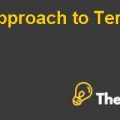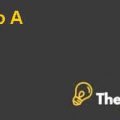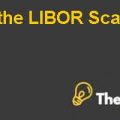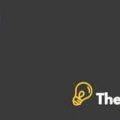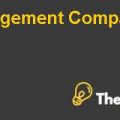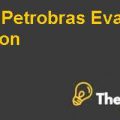
Accounting analysis:
Accounting analysis is based on 6 things that are defined below.
Principal accounting Policies:
The principal accounting policies vary from company to company and in the restaurant industry, there are some key accounting policies that are identified below.
- The first is inventory recognition system that must be low in cost or lower selling price less any cost to sell the inventory.
- The second is recognition and a depreciation of long term intangible assets.
- Recognition and amortization of long term intangible assets.
- Impairment review.
Access accounting flexibility:
Depreciation management has the flexibility to use any of three methods; straight line basis, reducing balance method and usage method.
Evaluate accounting strategy:
The inventory must be recognized at a low cost or its sales value. In this accounting principle, every company must follow this rule and there is no flexibility on the assumptions of management.
The long term tangible asset must be recorded at its cost and then it should be depreciated on a straight line basis, reducing balance method and usage basis. The management has the flexibility to choose any from three methods, but they must have to give reasonable basis for application and it must be applied consistently and for the same class of assets the method must be same.
For long term intangible asset, it only has straight line method available since the life of intangible assets is certain. Some intangible assets have uncertain life; therefore those assets should not be amortized, as they do not have any flexibility.
The impairment of assets is when the management has certain assumptions to believe that it cannot recover the amount of asset’s current book value. The impairment review must be undertaken every year before the end of the year when an event has occurred to believe that there is impairment. It must have lower selling price or total value of future cash flows from operations.
Identify red flag:
The red flag can be identified through the competitive analysis with the other companies of the same industry and any deviation from the industry practices is the identification of red flag that something is manipulated in the financial statements.
Accounting distortion:
In inventory recognition, the company may have some of the inventory that is obsolete and its cost in financial statements must be reduced however, the management does not do so.
The management believes that the profitability in the current years is high therefore it better to use, reducing balance method to charge higher expenses in recent years and lower expense in the next years to have profitability for many years.
Moreover, the management may not go forward to certain the life of intangible assets to reduce expenses for many years and increase net assets.
In case of impairment, the management can manipulate the future cash flows as to keep it away from charging an impairment expense in the financial statements.
Undo those distortions:
The distortion can only be undone with the substance of that asset or liability. The active role is played by an auditor in this case who assesses all accounting policies of the company with other industry practices. The auditor also performs his procedures to find out any window dressing by management that has manipulated earnings and assets for the personal benefit or to show a good picture to the investors.
The most helpful thing is to see the industry practices and any deviation from the industry can give an auditor evidence to believe that something is wrong in the financial accounts.Group Project Layout Case Solution
Effects on ratios:
The inventory overvaluation increases the current ratio, gross profit margin, net assets, net profit ratio, return on equity, and return on assets.
The depreciation method can manipulate net assets, return on assets, net profit margin, and return on equity.
The effect of not charging an amortization on an asset can manipulate net assets, return on assets, net profit margin, and return on equity.
The decision to not to charge impairment on the asset can manipulate net assets, return on assets, net profit margin, and return on equity.
Many companies manipulate the earning through such distortions to show a good picture to the investors and to have some personal benefits like bonus and commission.
Strategy analysis:
The strategy analysis is based upon the business analysis of the industry and the company itself. There are two appropriate methods that analyze the business strategies of the industry and the company itself (Cima Global, 2015). There are many ways through which the analysis can be made and some of these are given below.............
This is just a sample partial case solution. Please place the order on the website to order your own originally done case solution.

